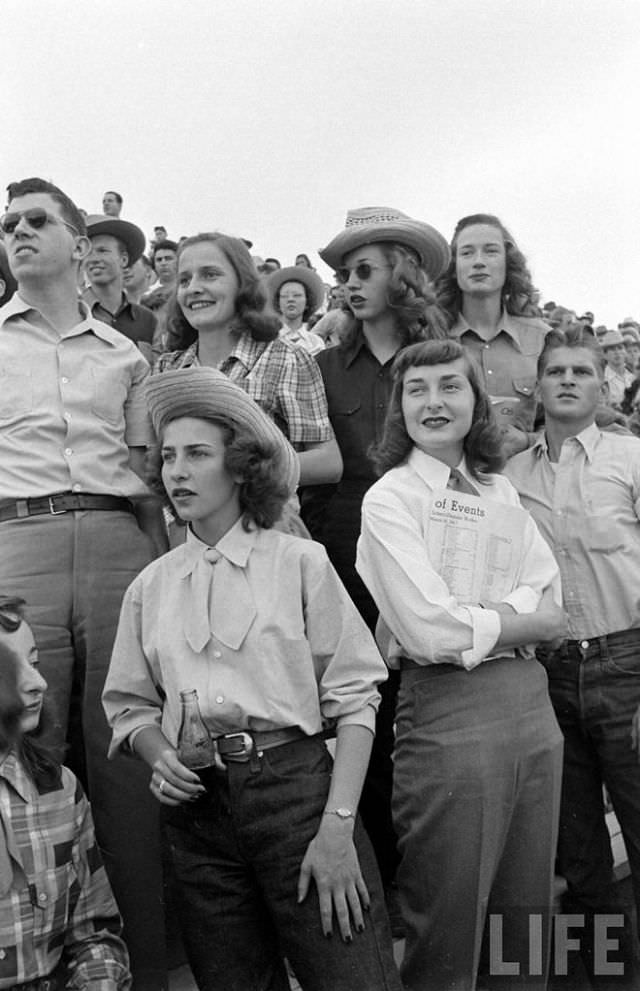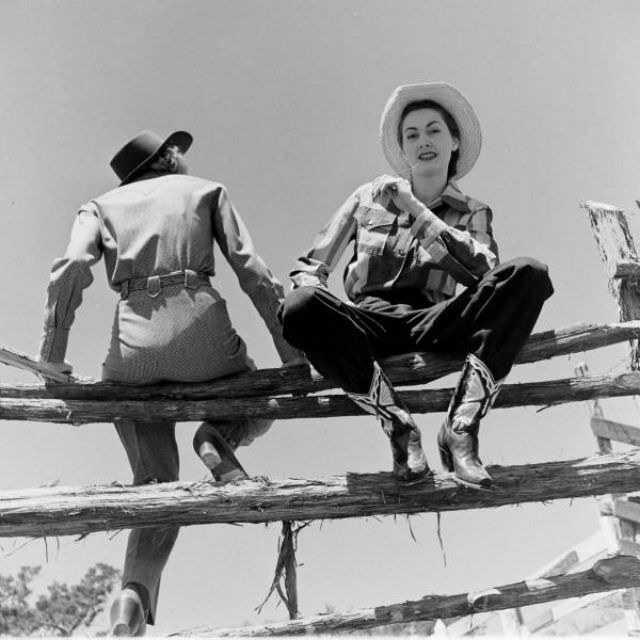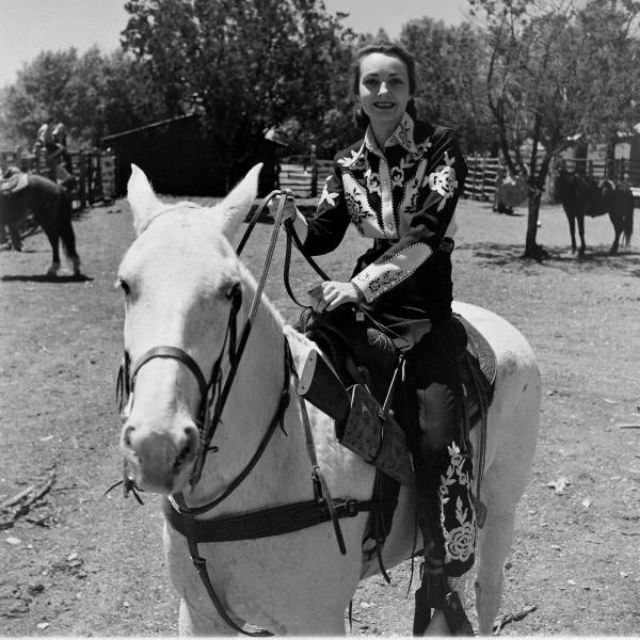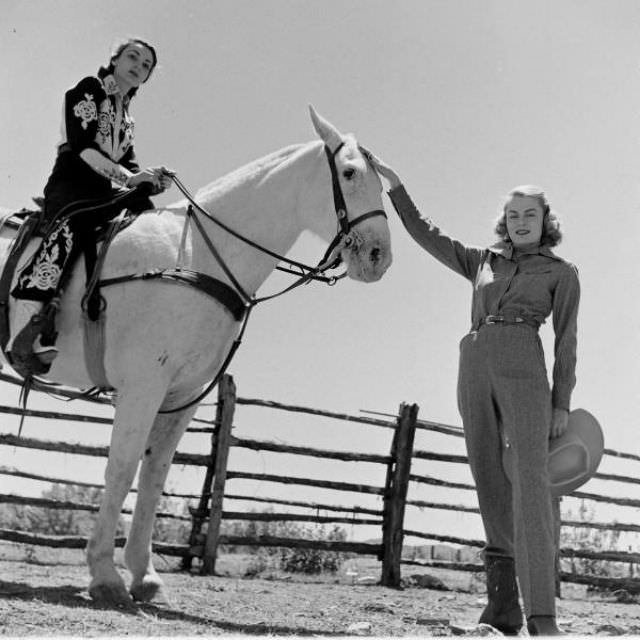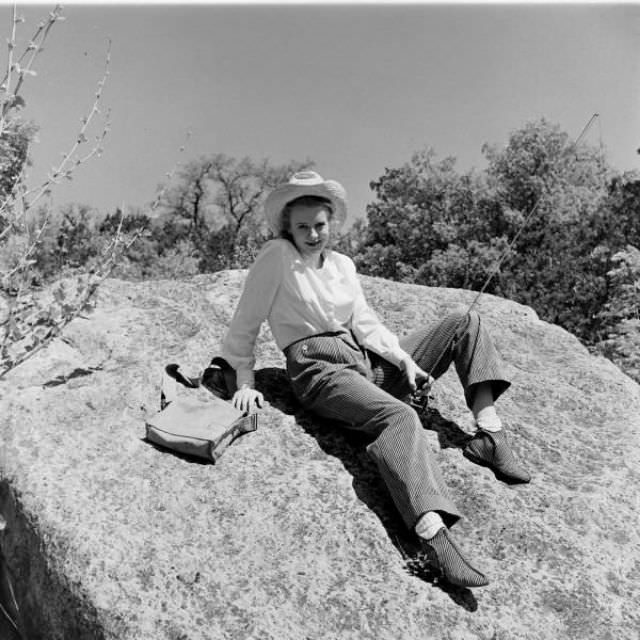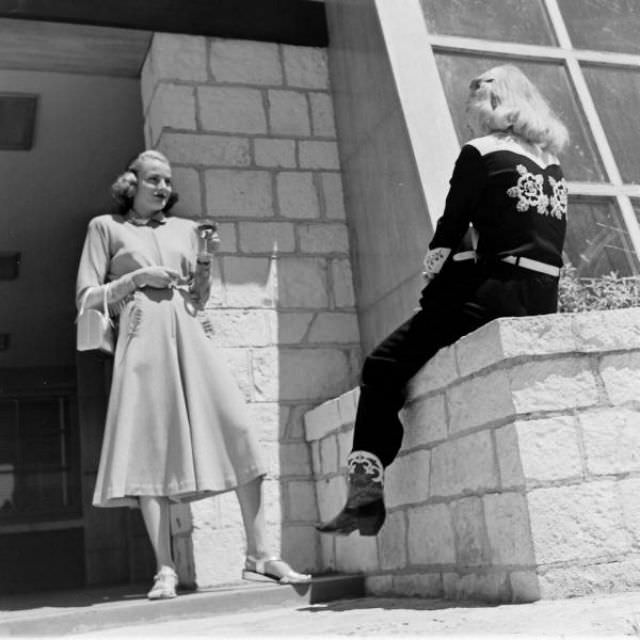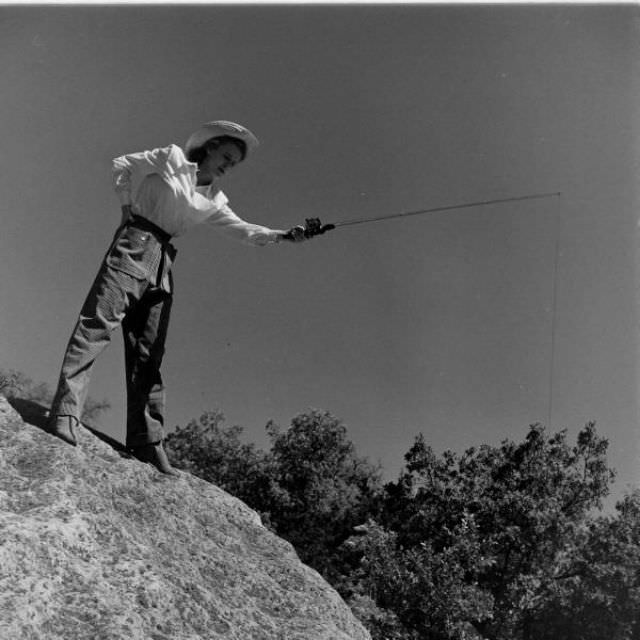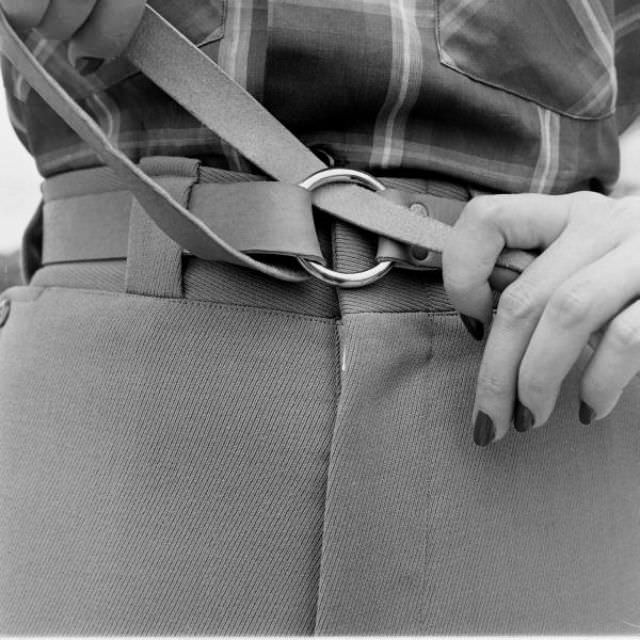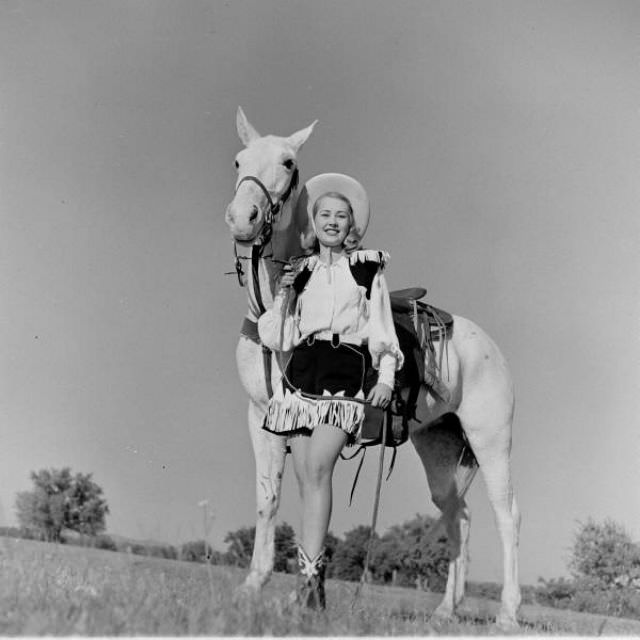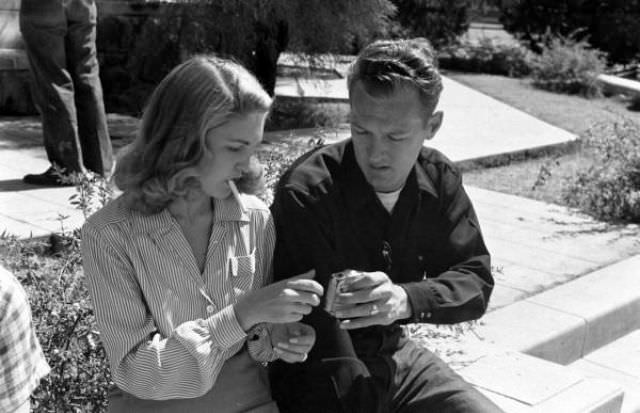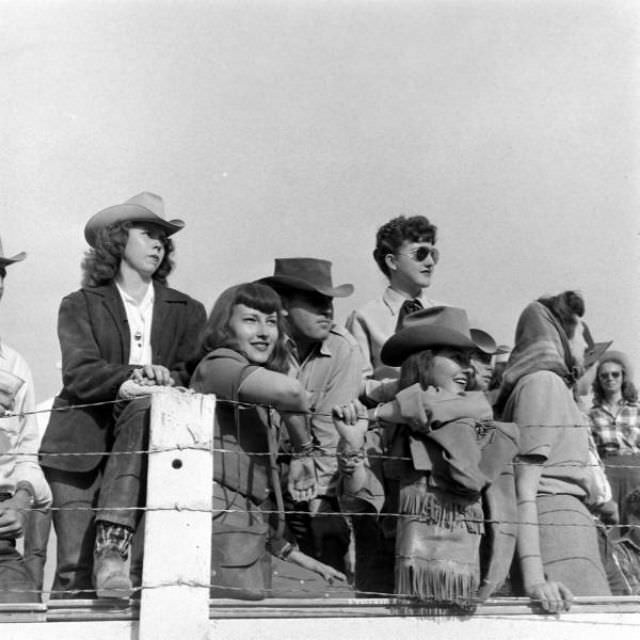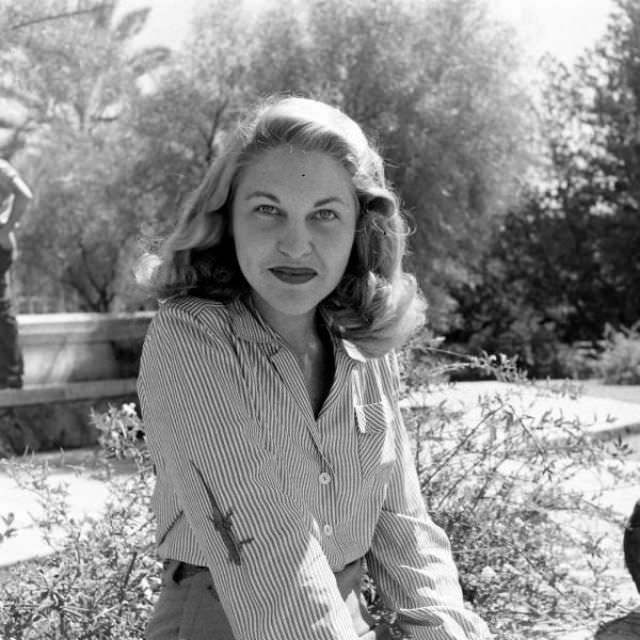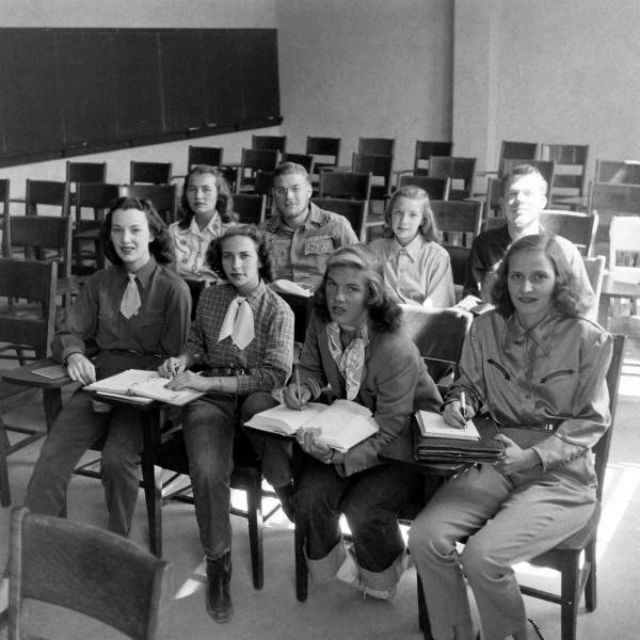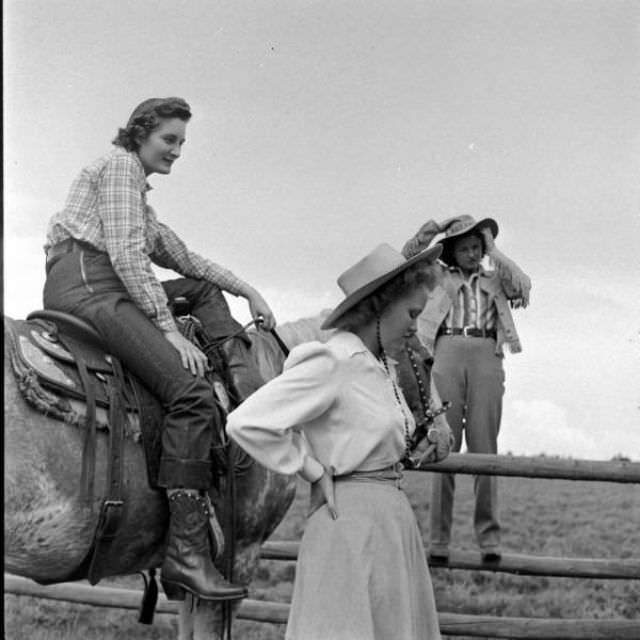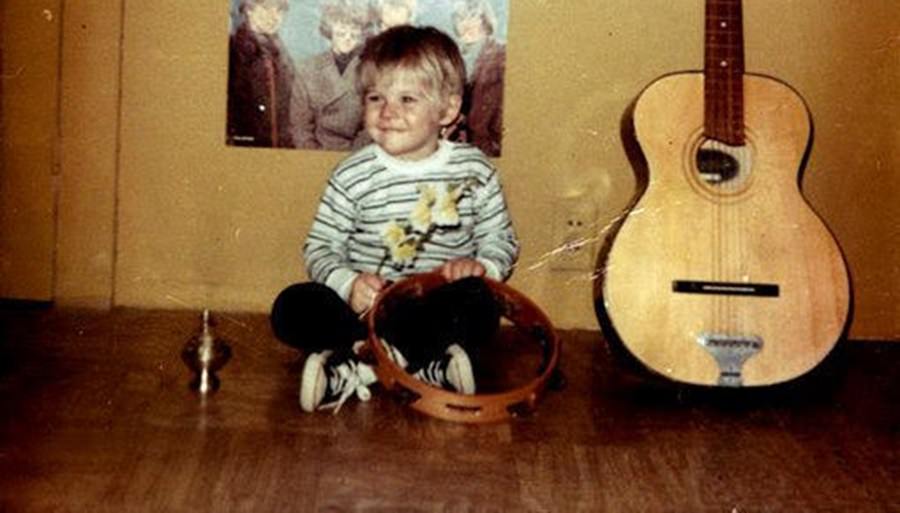Between 1947 and 1948, LIFE magazine photographers Nina Leen, Peter Stackpole, and Cornell Capa captured a rare and detailed look into the world of American cowgirls. These photos, taken at the University of Arizona Rodeo and the grand opening of the Flying L Ranch in Texas, documented a real and active part of American life. The images showed young women on horseback, in rodeo arenas, and walking proudly in western wear. These were not staged scenes. They were working athletes, skilled riders, and cultural figures at a specific moment in time.
At the University of Arizona Rodeo in Tucson, cowgirls competed in front of cheering crowds. These events weren’t only for show. Women took part in serious contests, including barrel racing, roping, and trick riding. Riders wore clean pressed jeans, button-down shirts, wide belts, and crisp cowboy hats. Their horses were well-trained, and the performances required speed, timing, and balance. The cowgirls trained just as hard as the men. They handled ropes, saddles, and reins with full control. Many of them came from ranching families and had grown up around horses and cattle.
Photographer Nina Leen focused on portraits that showed more than action. She took photos of the women before and after events—brushing down horses, adjusting boots, and resting in the stands. These moments showed the tired faces behind the sport. Dust on their clothes, sunburn on their cheeks, and hands worn from reins made it clear these were not models. They were workers and athletes. In many shots, their eyes were calm and focused, staring down the camera with quiet strength.
Read more
At the Flying L Ranch in Texas, the focus shifted to celebration and western fashion. In 1948, the ranch hosted an opening event that included a cowgirl fashion show. Here, photographer Peter Stackpole captured women dressed in detailed western outfits. The clothes were practical but also stylish. Embroidered shirts, fringed skirts, and colorful scarves stood out in the bright Texas sun. Some wore boots with custom stitching. Others had silver-tipped belts and hand-tooled leather vests. The event brought together ranch hands, performers, and guests from cities who wanted to experience western life for a day.
Cornell Capa’s photos from the same event zoomed in on movement—walking, riding, and casual conversation. His camera caught the motion of boots on dirt and skirts swinging as riders mounted horses. These weren’t quiet portraits. They showed a scene full of life. In one image, a young cowgirl leaned against a fence, her hat tilted back, a rope coiled at her side. In another, two women rode side-by-side, straight-backed and alert, leading a group through a trail on the ranch property.
These cowgirls were part of a working tradition but also became symbols. They stood for skill, independence, and rural pride. Their gear was not just decoration. Saddles, ropes, and gloves were tools used every day. Each woman had her own horse, often trained personally. Routines included grooming, feeding, and riding before the crowd ever arrived. Before a rodeo, many cowgirls began their day before dawn, checking tack and warming up their animals.
Backstage at the rodeos, the atmosphere was tense. Riders stretched, horses shifted, and the air was filled with dust and nervous energy. Some women fixed their hair or adjusted their collars in small mirrors nailed to trailer walls. Others sat quietly, heads down, reviewing their planned turns or rope throws. The crowd heard music and cheers, but behind the arena gates, it was serious and focused. Getting hurt was always a risk, especially during high-speed events like barrel racing or trick riding.
At the Flying L Ranch, things were more social. Guests lined up to watch the fashion events, eat outdoor meals, and ride under supervision. Cowgirls who worked the event led tours, showed off their horses, and helped beginners into saddles. While it was a celebration, the ranch hands still kept things in order. Loose gates were tied down. Horses were rotated to avoid exhaustion. No detail was ignored by the women running the show.
The cowgirls of the 1940s handled both the physical demands of ranch work and the performance side of rodeos and public events. Their days were long and often exhausting. But they showed up clean, pressed, and ready to ride. LIFE’s photographers didn’t stage these scenes—they recorded what was already happening.
The University of Arizona Rodeo was not just a student event. It attracted large audiences and serious competitors. Events followed standard rules. Judges scored based on precision, speed, and form. Cowgirls had to stay within specific times or patterns, or they lost points. Even one missed barrel or dropped rope meant losing the lead. Riders memorized their runs in advance and knew the timing down to the second. A well-trained horse responded to light signals: a shift in weight, a pull of the rein, or a short vocal cue.
At both the rodeo and the ranch, cowgirls handled all their own equipment. Saddles were tightened by hand. Bridles and stirrups were adjusted between rides. Horses were cooled down after each event and checked for any sign of stress or strain. Many cowgirls had developed strong bonds with their horses over years. They knew their animals’ moods and limits. That understanding often meant the difference between a clean ride and a dangerous fall.
Photos from these events were printed in LIFE magazine in full-page spreads. Each image came with a short caption, explaining the location and names when available. Readers across the country saw young women in western dress doing skilled, physical work. These weren’t actresses or dancers. They were cowgirls—riders, ropers, and horsewomen—caught in real moments of effort, style, and pride.

